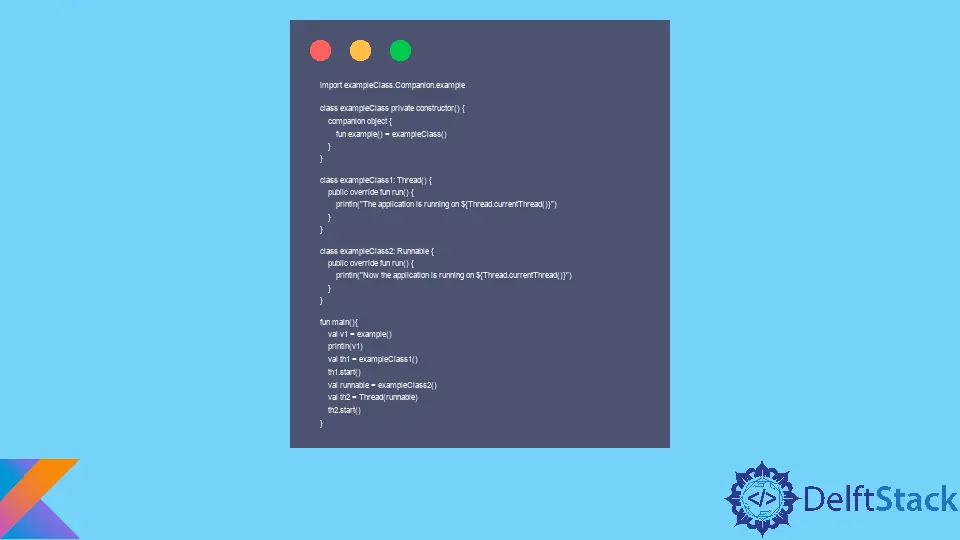Kotlin Private Constructor

We can define a primary constructor in Java programming as private. We can then access the constructor using a public static method. However, is that possible in Kotlin?
Kotlin, too, allows the creation of private constructors. How? That we will see in this article.
Kotlin private Constructor
Constructors are special member functions of a Kotlin class. They are invoked when we create and initiate an object.
Kotlin private constructors are helpful to enable custom visibility into the class; it will also hide the primary constructor of the Kotlin class. For example, suppose we want to prevent an unwanted object creation for memory efficiency. We can use private constructors to achieve that.
We can define a Kotlin constructor as private using the access modifier keyword private and a companion object. Class members can access companion objects’ private members.
The syntax of declaring a constructor as private is:
class class_Name private constructor()
Working of private Constructors
private constructors work by making the primary constructor of your class private. It prevents other classes from creating objects using the private constructor.
When creating a private constructor, it is best to use a static method. The reason is that static methods can run without object initialization.
Now, the private constructors will allow creating and initializing objects from the same class. However, when you try to initialize objects from other classes, it will throw an error.
Pros and Cons of private Constructors
Let’s start with exploring the advantages of private constructors in Kotlin.
The first benefit of using a private constructor is security. Since no other classes can access the data of the private class, it becomes secure.
Memory efficiency is also an advantage of using private constructors means that only a single instance is created. Moreover, it can also prevent the automatic generation of a default constructor.
Coming to the disadvantages (cons), private constructors do not allow inheritance. Additionally, if we want to initialize a private constructor class, we need to use a nested class or a static method.
Demonstration of a Kotlin private Constructor
Here’s an example where we use the above syntax to create a class with a private constructor.
import exampleClass.Companion.example
class exampleClass private constructor() {
companion object {
fun example() = exampleClass()
}
}
class exampleClass1: Thread() {
public override fun run() {
println("The application is running on ${Thread.currentThread()}")
}
}
class exampleClass2: Runnable {
public override fun run() {
println("Now the application is running on ${Thread.currentThread()}")
}
}
fun main(){
val v1 = example()
println(v1)
val th1 = exampleClass1()
th1.start()
val runnable = exampleClass2()
val th2 = Thread(runnable)
th2.start()
}
Output:
exampleClass@77afea7d
The application is running on Thread[Thread-0,5, main]
Now the application is running on Thread[Thread-1,5, main]
Kailash Vaviya is a freelance writer who started writing in 2019 and has never stopped since then as he fell in love with it. He has a soft corner for technology and likes to read, learn, and write about it. His content is focused on providing information to help build a brand presence and gain engagement.
LinkedIn